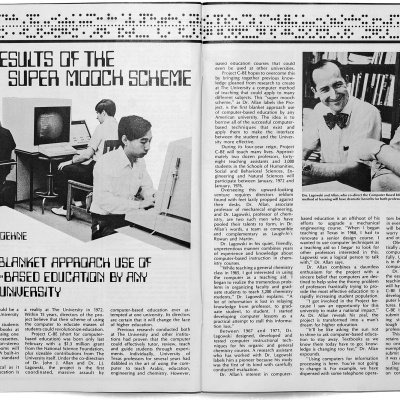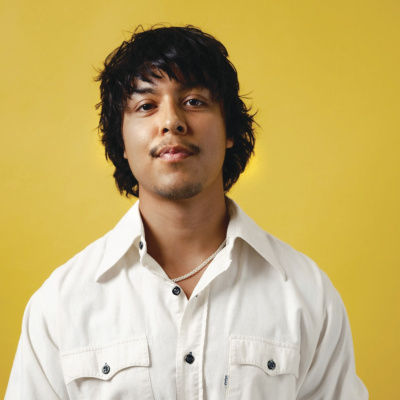The Places Where We’ve Rooted for the Longhorns—and How Much They Mean to Us
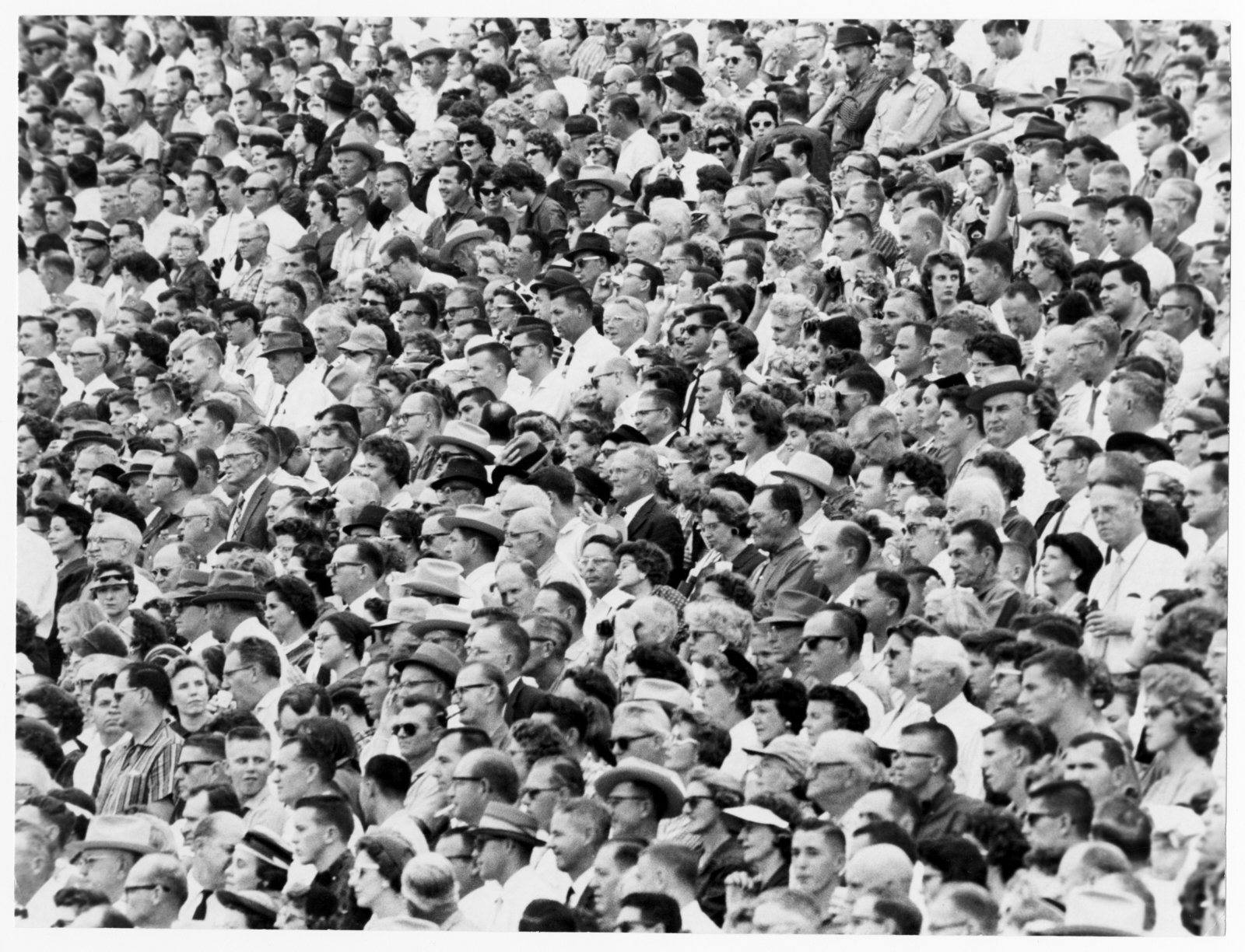

It was, undoubtedly, a great year for Texas athletics.
But it was, all things considered, not as great a year for Texas fans—most of whom had to settle for cheering on the Longhorns from their homes. If they were lucky, they were masked inside half-full stadiums, taking care not to get too swept up in a moment of celebration, lest they throw caution to the wind and accidentally high-five a stranger in their section. Great moments in sports certainly translate to the small screen. But transcendent, full-on fan experiences? Those need more than just an incredible play—they need a sense of place. During COVID-19, we didn’t find ourselves daydreaming about game-winning touchdowns so much as we longed to be back home on the Forty Acres. We couldn’t stop thinking about how a no-hitter looks that much sweeter bathed in the golden light of a sunset at UFCU Disch-Falk Field; the way a rousing, “Texas! Fight!” can make us forget about our aching legs after trudging up the ramp at DKR-Texas Memorial Stadium; that moment when Gregory Gym gets so loud, it feels as if all the fans who have packed it over the past 90 years are in there together, cheering in unison. We missed it all so much that we went down our collective memory lane, poring through photos of the places we’ve played: the fields, gyms, and stadiums that have sat emptier these past 18 months than they’ve ever been. Here’s a look back at many of the fan-filled arenas our Longhorns have called home.
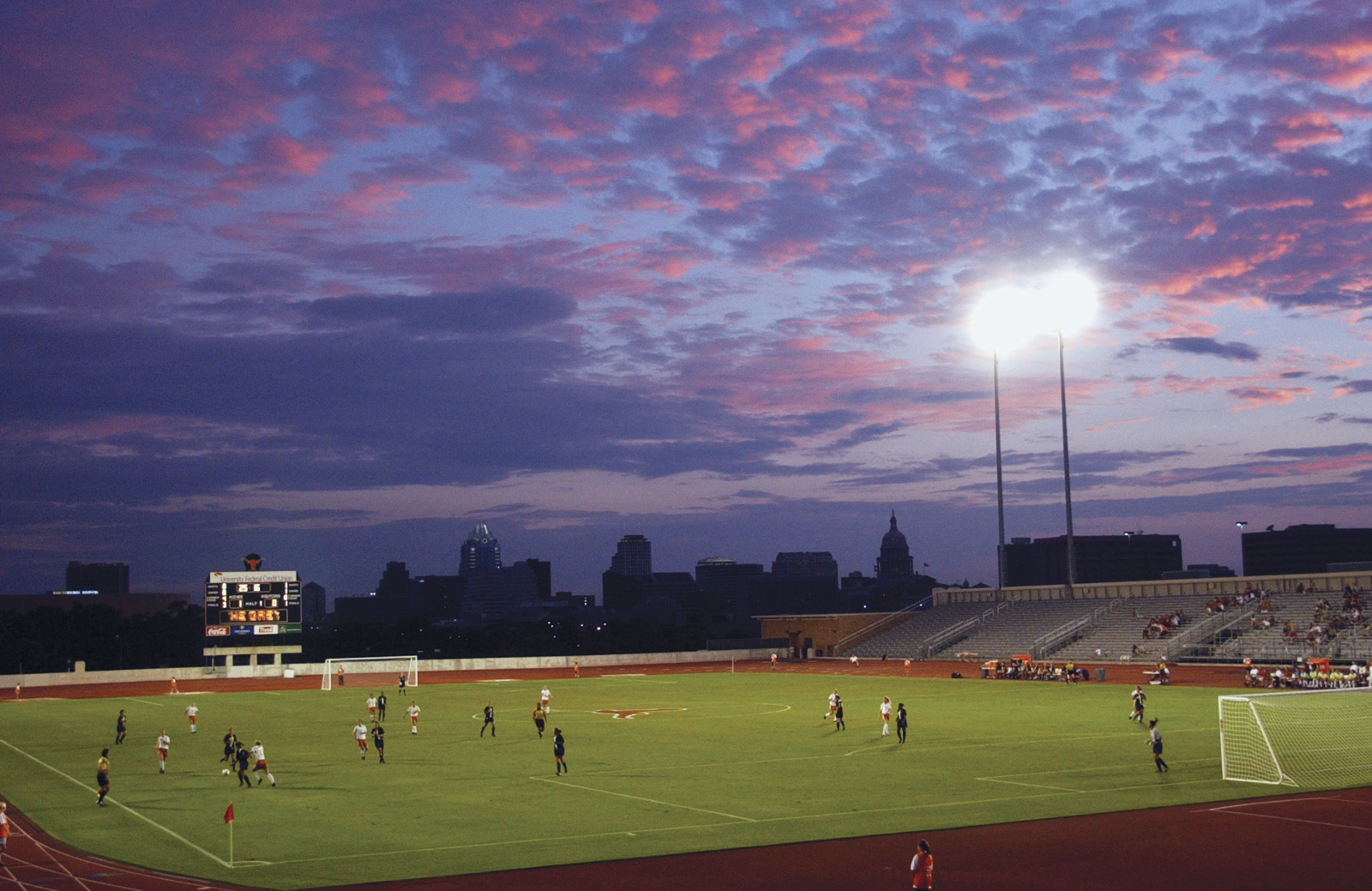
Mike A. Myers Stadium and Soccer Field. Home to both Texas Soccer and Texas Track and Field programs, the complex seats over 20,000 spectators, and with full lighting for night events, tickets often come with some of the prettiest sunsets in town—for no extra cost.
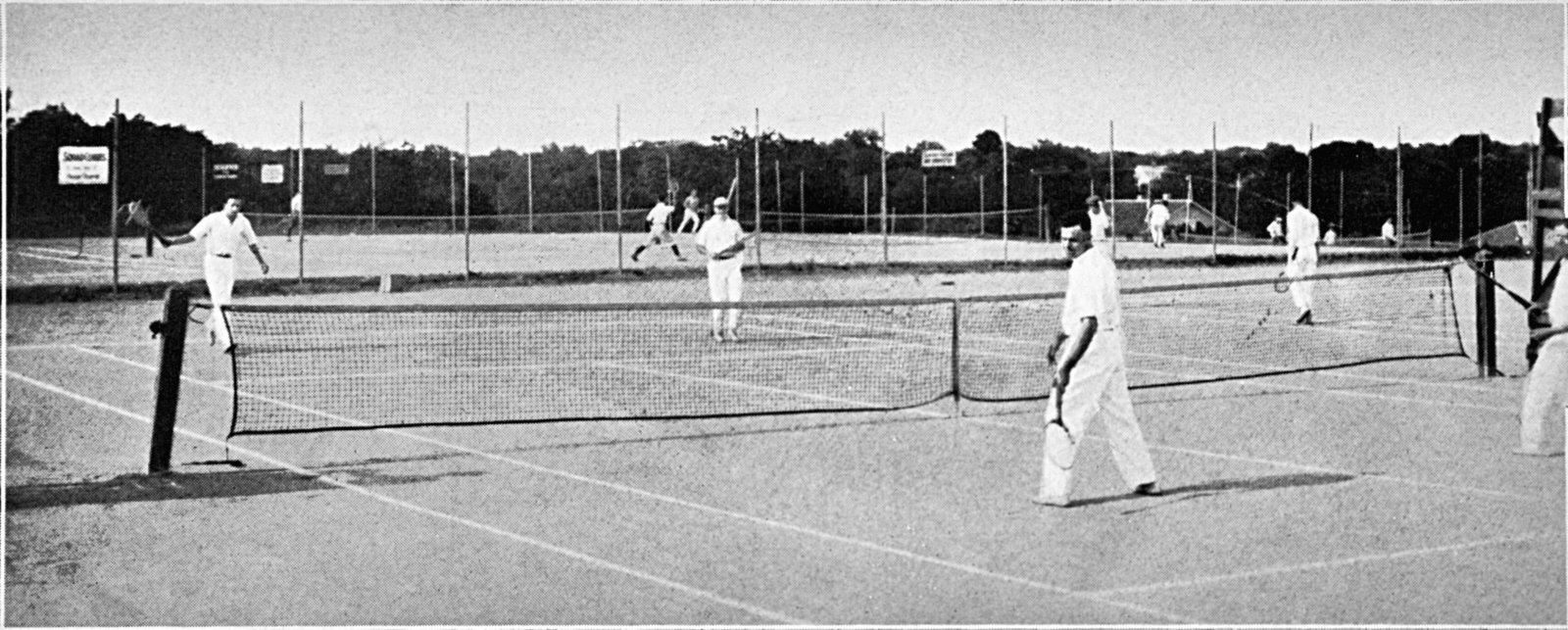
UT Tennis Courts circa 1923. According to the Cactus, Men’s Tennis lost only one of its eight dual meets during their 1923 season—to Oklahoma, at home, due to “the sudden illness of Captain Lewis White.” A substitute for White jumped in at the last minute, “and with more seasoning would have won.”

The Penick-Allison Tennis Center, circa 2008. Built in 1986, the $3 million tennis center was named after D.A. Penick—a top player at UT who was named head coach in 1912—and Wilmer Allison, his prodigy. The PATC was demolished in 2014 to make room for Dell Medical School, and in 2018 a new, 24,000-square-foot Tennis Center with 12 outdoor courts opened near UFCU Disch-Falk Field and Red and Charline McCombs Field.

DKR-Texas Memorial Stadium, circa early 2000s, before the building of the Godzillatron and massive North End Zone expansion.
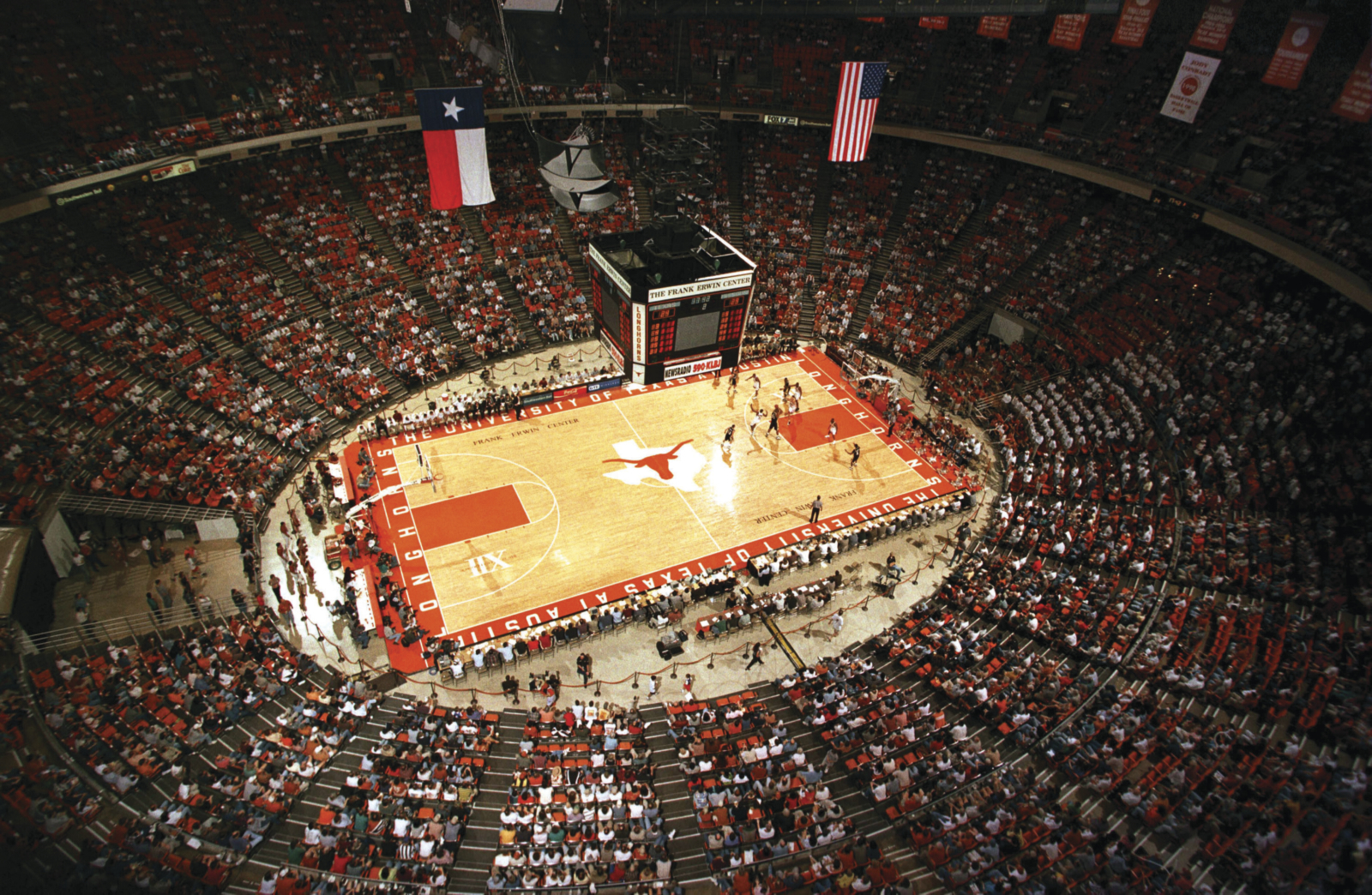
UT men’s basketball at the Erwin Center, known as “The Drum,” circa 1997. This spring, the over 40-year-old Erwin Center—which hosted its very first event, a men’s basketball game versus the University of Oklahoma on Nov. 29, 1977—will be replaced by a $338 million public-private project, the Moody Center.
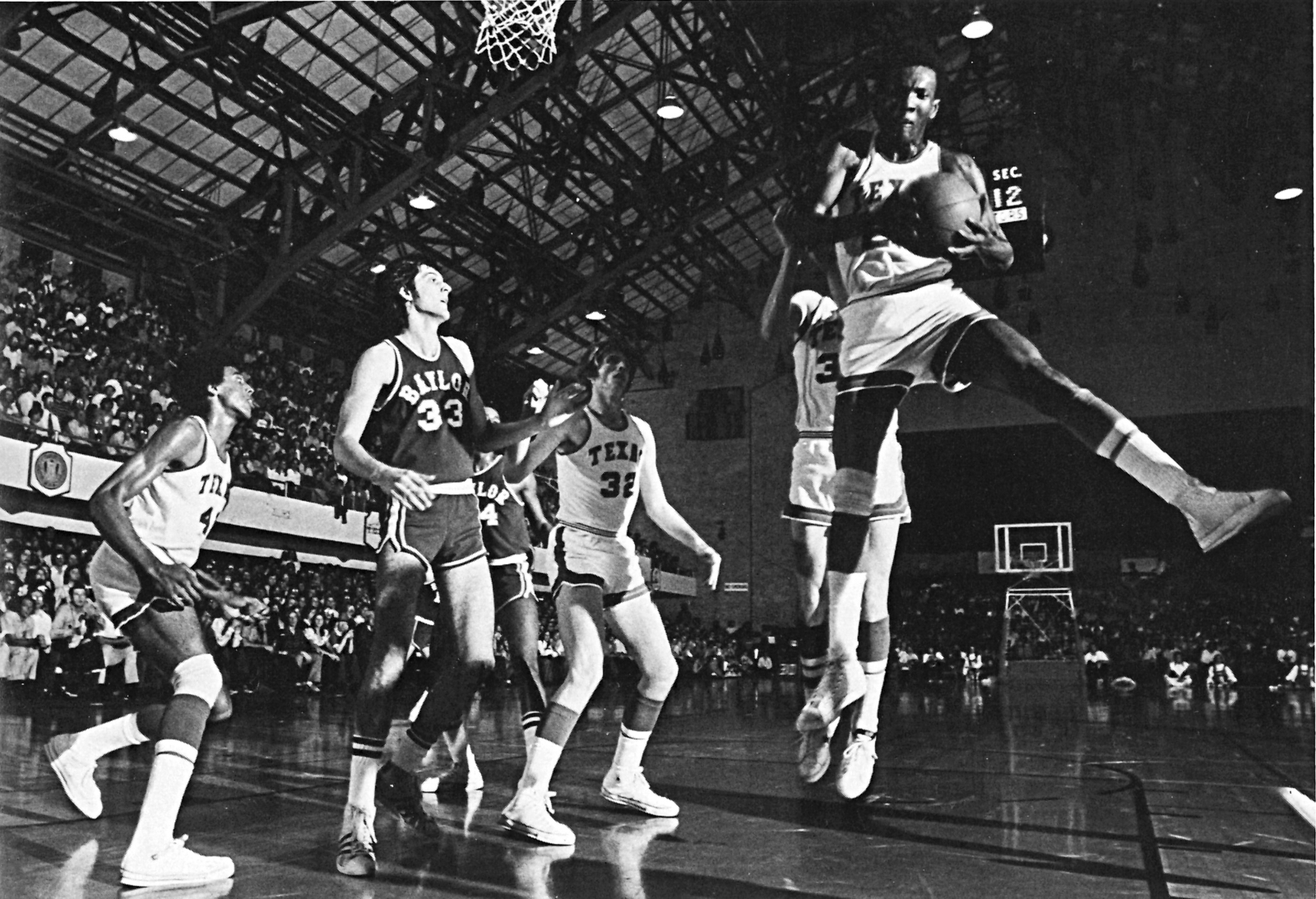
Texas men’s basketball at Gregory Gymnasium in 1974. Built in 1930 for around $500,000, Gregory served as the home for both UT basketball and swimming teams for 46 years, until the Erwin Center and the Texas Swimming Center were built.
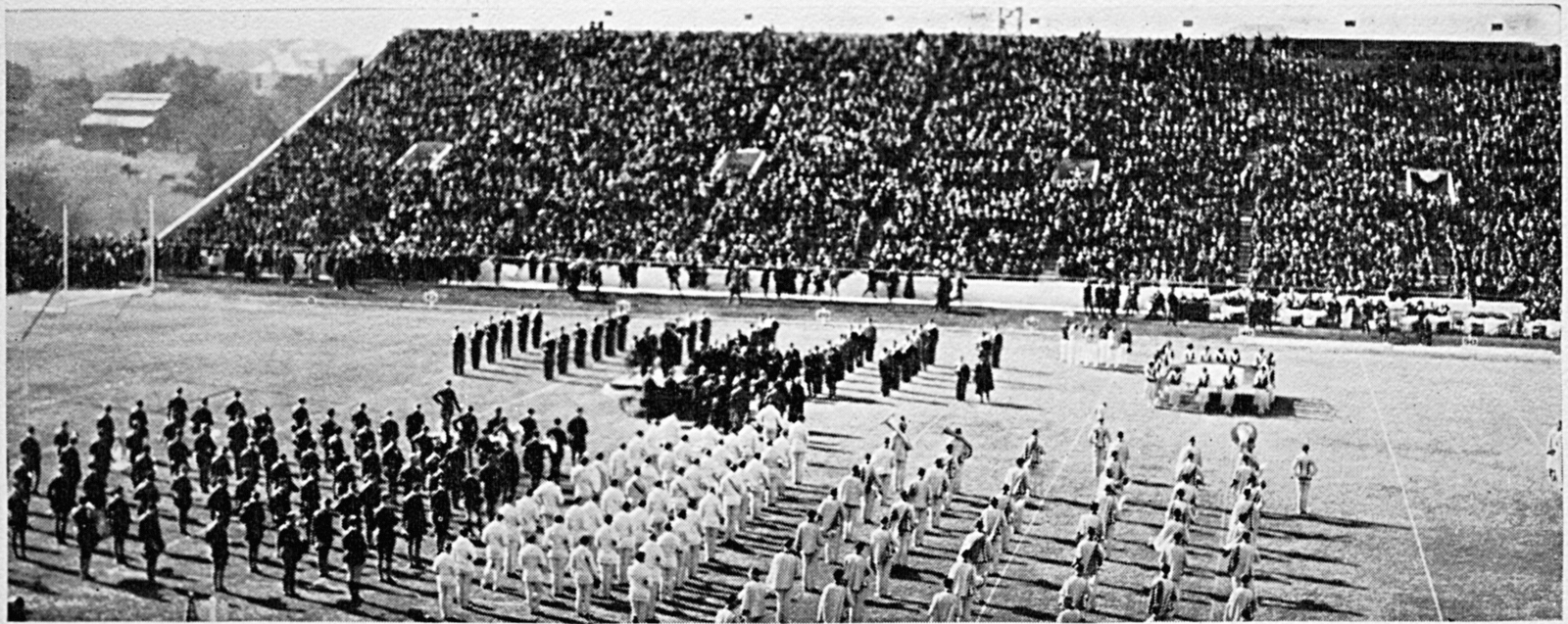
The combined Longhorn and Aggie bands play the “The Star-Spangled Banner” as the flag rises on Nov. 24, 1924, to officially dedicate War Memorial Stadium to the 198,520 Texans who fought and 5,280 who died in World War I. The Thanksgiving Day game ended with a sweet 7-0 victory over A&M.
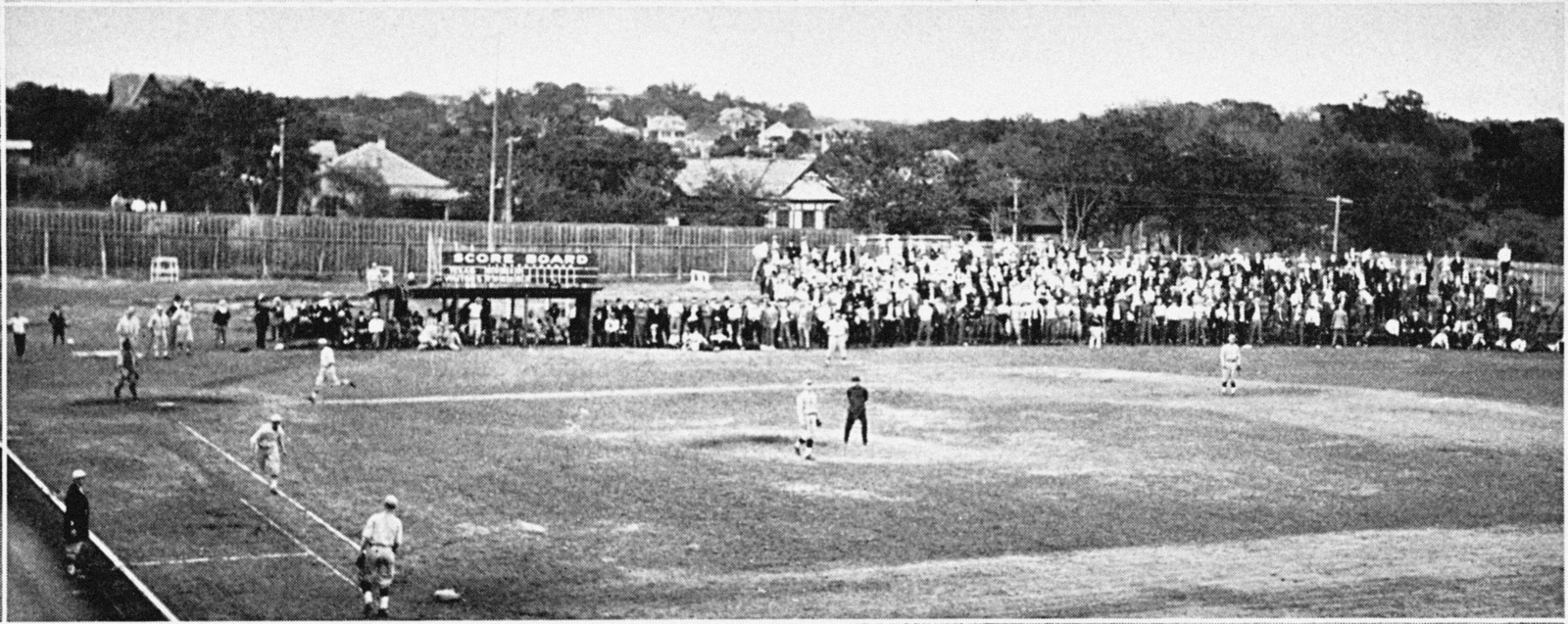
A view from the stands of Texas Baseball at “Billy Goat Hill,” circa 1924—four years before it was officially named Clark Field, in 1928.
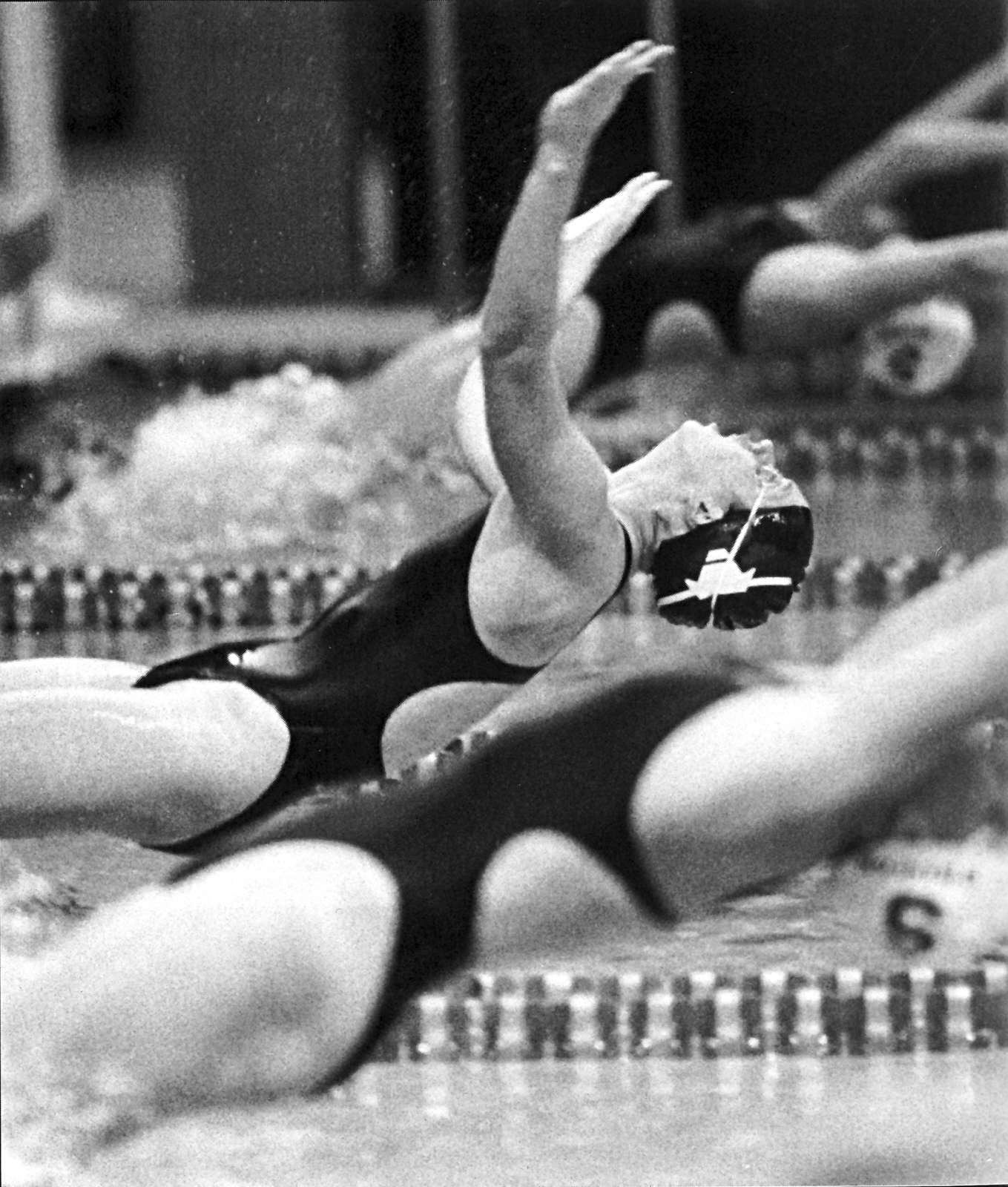
A women’s swim meet at what was then known as simply the Texas Swim Center, circa 1997, where, according to the Cactus, “the Women’s swim team invents a new medley relay.”

Fans at Disch-Falk Field, which replaced Clark Field in 1975. Up until the opening of the Disch, outfielders playing at Clark had to contend with a limestone cliff that ran from right-center field to the left field foul line.

Officially known as the Lee and Joe Jamail Texas Swim Center since the mid-1990s, UT’s 50-meter pool is considered to be one of the fastest in the world thanks to its depth, gutter system, high filtration rate, and lane width.
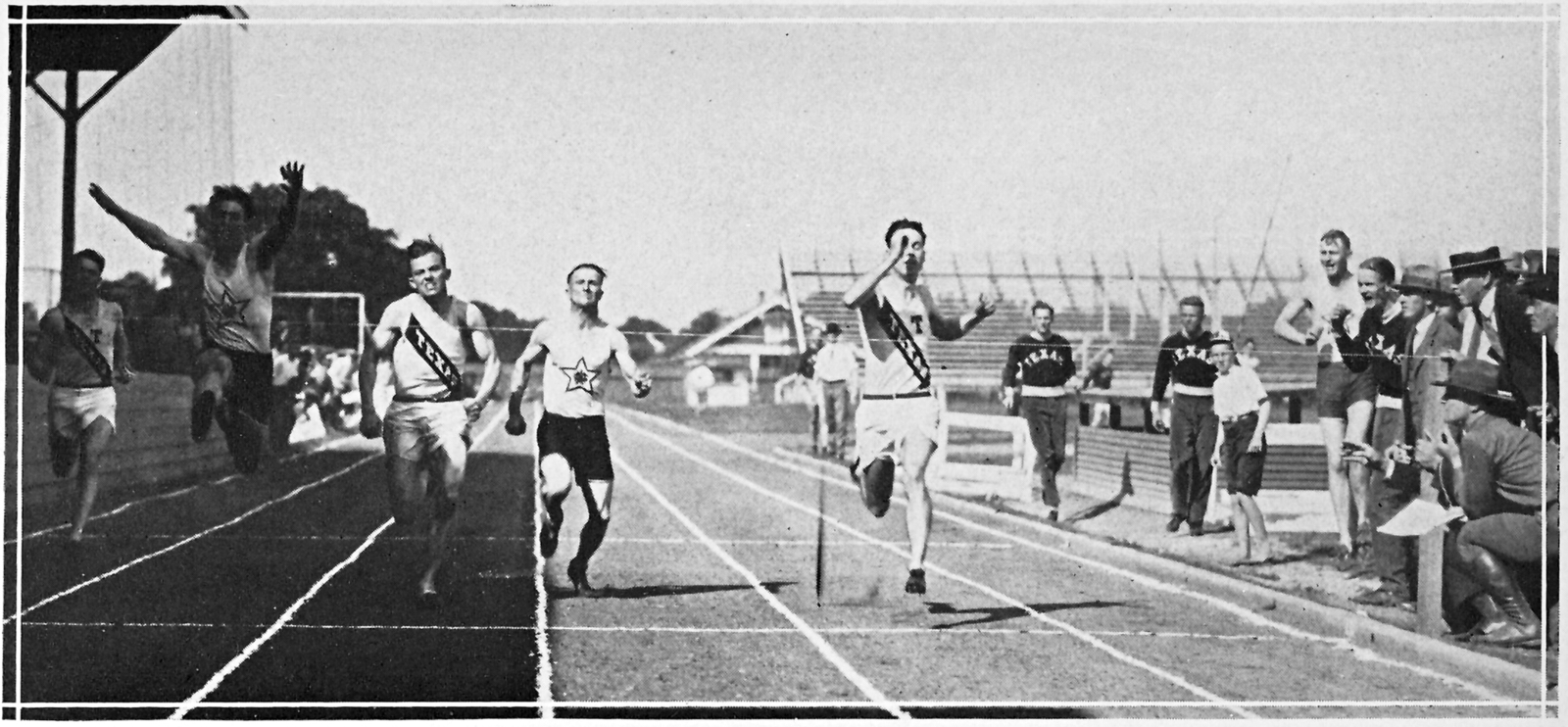
A 100-yard dash at Clark Field in 1924—the final year that Texas football and track and field played there before moving to Memorial Stadium. In 1928, Clark Field changed locations to house baseball.

Volleyball circa 2006 at Gregory Gym. With an average of over 1,500 fans per match and a vigorous student section, the roar inside the cozy, historic gym gives the Longhorns a true home-field advantage.

A men’s relay race at Mike A. Myers Stadium, April 2004. After plans were made to expand DKR-Texas Memorial into a football-only stadium, Myers Stadium opened in March 1999—just in time to host Texas Relays.
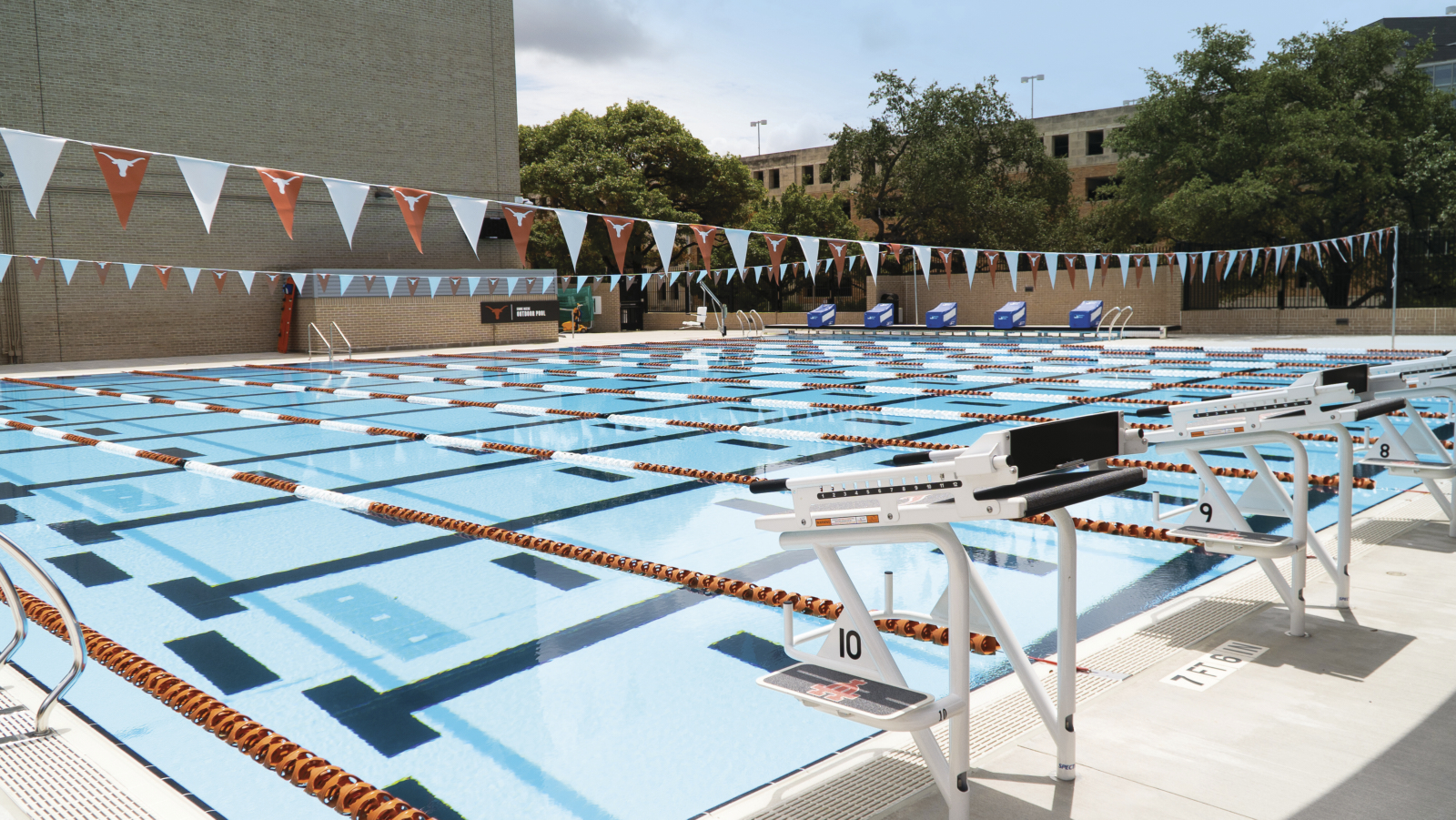
The Eddie Reese Outdoor Pool, officially opened in 2020.
Credits: The Dolph Briscoe Center for American History, UT Athletics (9), Cactus (5), Jim Sigmon

